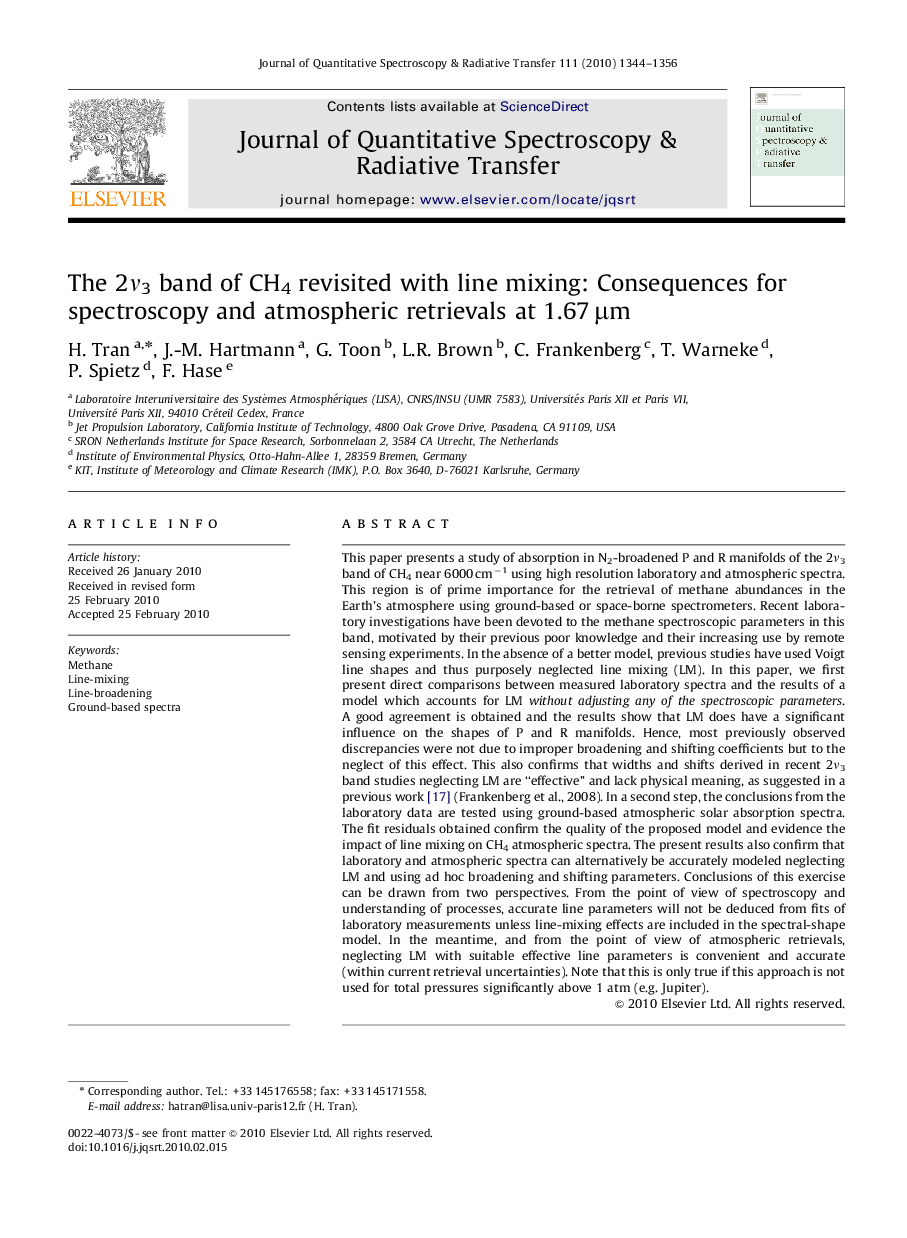| Article ID | Journal | Published Year | Pages | File Type |
|---|---|---|---|---|
| 5429381 | Journal of Quantitative Spectroscopy and Radiative Transfer | 2010 | 13 Pages |
This paper presents a study of absorption in N2-broadened P and R manifolds of the 2ν3 band of CH4 near 6000 cmâ1 using high resolution laboratory and atmospheric spectra. This region is of prime importance for the retrieval of methane abundances in the Earth's atmosphere using ground-based or space-borne spectrometers. Recent laboratory investigations have been devoted to the methane spectroscopic parameters in this band, motivated by their previous poor knowledge and their increasing use by remote sensing experiments. In the absence of a better model, previous studies have used Voigt line shapes and thus purposely neglected line mixing (LM). In this paper, we first present direct comparisons between measured laboratory spectra and the results of a model which accounts for LM without adjusting any of the spectroscopic parameters. A good agreement is obtained and the results show that LM does have a significant influence on the shapes of P and R manifolds. Hence, most previously observed discrepancies were not due to improper broadening and shifting coefficients but to the neglect of this effect. This also confirms that widths and shifts derived in recent 2ν3 band studies neglecting LM are “effective” and lack physical meaning, as suggested in a previous work [17] (Frankenberg et al., 2008). In a second step, the conclusions from the laboratory data are tested using ground-based atmospheric solar absorption spectra. The fit residuals obtained confirm the quality of the proposed model and evidence the impact of line mixing on CH4 atmospheric spectra. The present results also confirm that laboratory and atmospheric spectra can alternatively be accurately modeled neglecting LM and using ad hoc broadening and shifting parameters. Conclusions of this exercise can be drawn from two perspectives. From the point of view of spectroscopy and understanding of processes, accurate line parameters will not be deduced from fits of laboratory measurements unless line-mixing effects are included in the spectral-shape model. In the meantime, and from the point of view of atmospheric retrievals, neglecting LM with suitable effective line parameters is convenient and accurate (within current retrieval uncertainties). Note that this is only true if this approach is not used for total pressures significantly above 1 atm (e.g. Jupiter).
